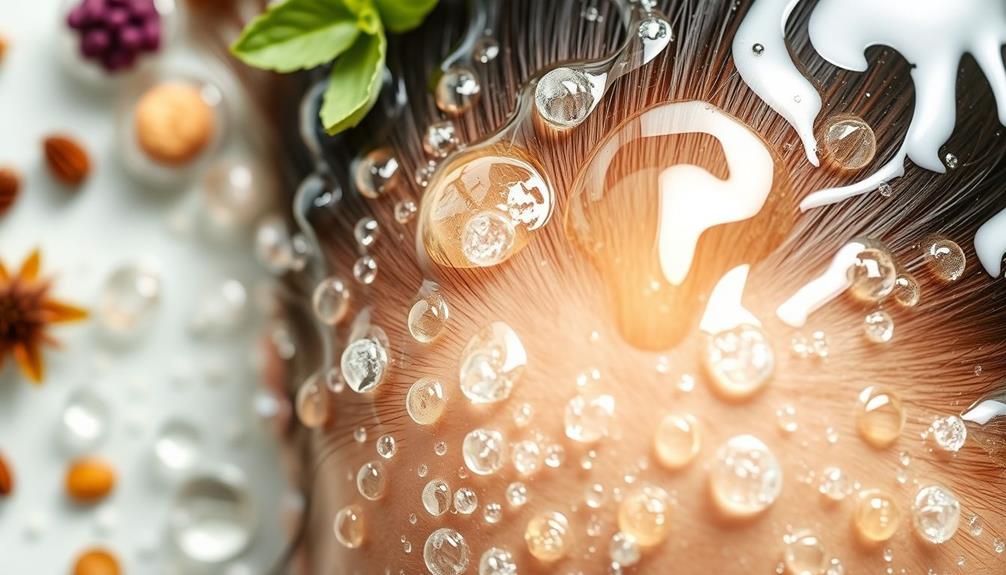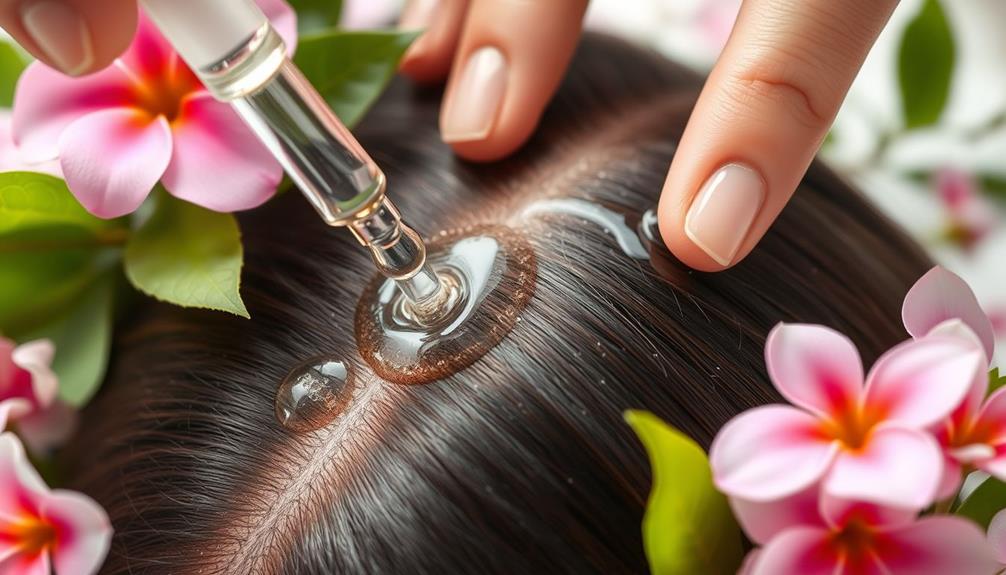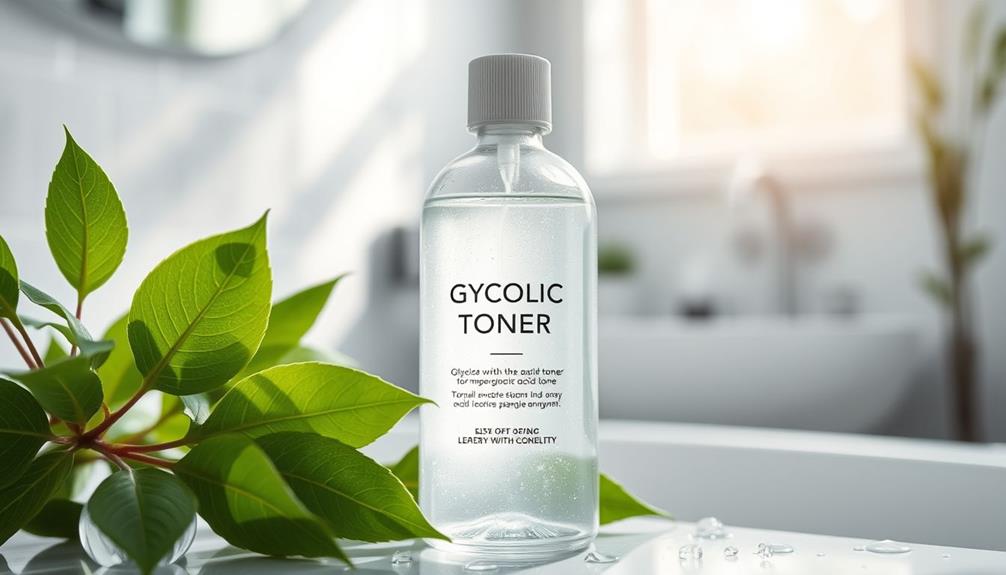Dermatologists highly recommend the use of glycolic acid toner for its ability to improve skin texture. They point out the advantages, such as reducing dullness, diminishing fine lines, and clearing pores, which makes it especially beneficial for those with acne-prone skin. It is suggested to start with a lower concentration to assess your skin’s reaction and to apply the toner after cleansing for optimal absorption. Although initial sensitivity may occur, it typically diminishes with regular use. Remember to always apply sunscreen to protect against increased photosensitivity. If you are interested in learning about the best complementary ingredients and tips for usage, there is much more to discover.
Key Takeaways
- Dermatologists recommend starting with a low concentration of glycolic acid to minimize irritation and assess skin tolerance.
- Regular use of glycolic acid toner can significantly improve skin texture and promote a smoother complexion.
- Experts highlight the importance of combining glycolic acid with hydrating ingredients like hyaluronic acid to prevent dryness.
- Increased sensitivity to sunlight is a common concern; dermatologists stress the necessity of using sunscreen daily.
Understanding Glycolic Acid
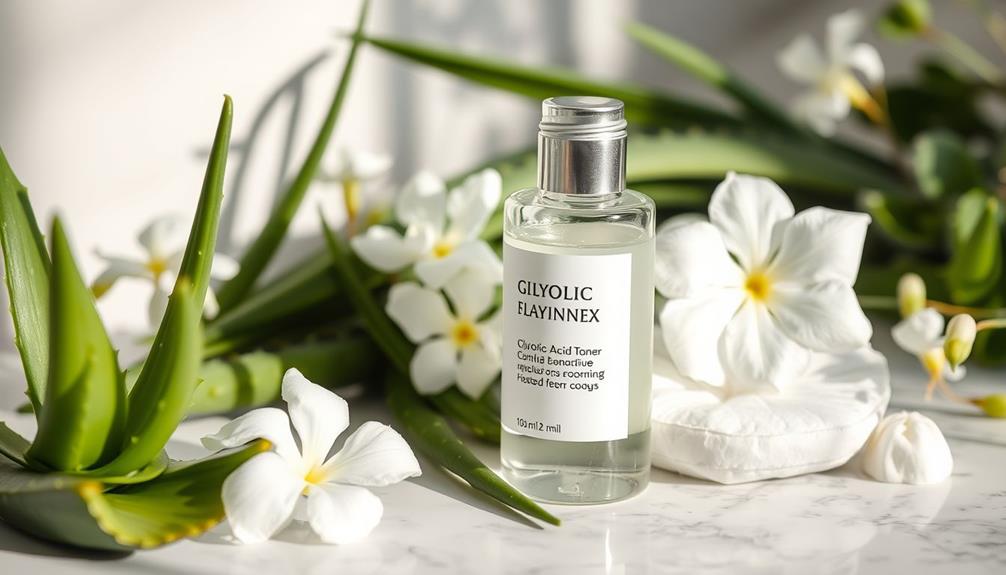
Glycolic acid, a powerful alpha-hydroxy acid derived from sugarcane, effectively exfoliates your skin and promotes cell turnover. This potent chemical exfoliant has the smallest molecular weight among AHAs, allowing it to penetrate deeper into your skin.
As a result, it addresses surface-level issues like dullness and uneven texture, giving you a smoother complexion. Additionally, incorporating essential oils like lavender and chamomile can enhance your skincare routine by providing benefits of essential oils that include antimicrobial properties and emotional balance.
With regular use, glycolic acid can considerably reduce fine lines and wrinkles, making it a favorite among dermatologists for those with photo-aged skin.
However, incorporating it into your skincare routine requires a gradual introduction. Start with a lower concentration, typically around 5%, and slowly increase it as your skin builds tolerance. This approach minimizes irritation while maximizing the benefits of its exfoliating properties.
Key Benefits of Glycolic Acid Toner

A glycolic acid toner offers numerous benefits, making it a must-have in your skincare routine for achieving smoother and more radiant skin. One of the key advantages is its ability to improve skin texture through its exfoliating properties. By promoting cell turnover, this toner helps you shed dead skin cells, revealing a fresher complexion underneath.
Additionally, incorporating elements like natural fixes for uneven eyes can enhance your overall skincare regimen. Regular use of a glycolic acid toner can also stimulate collagen production, which is essential for maintaining your skin's firmness and elasticity.
Additionally, it can minimize the appearance of pores, giving your skin a refined look. If you have acne-prone skin, this toner can be particularly beneficial by unclogging pores, preventing breakouts, and controlling oiliness.
Moreover, consistent application can help fade hyperpigmentation and sunspots, leading to a more even skin tone over time. Dermatologists often recommend incorporating glycolic acid toner into your nightly routine, as its effectiveness is amplified when applied after cleansing and before serums or moisturizers.
With these combined benefits, a glycolic acid toner can truly transform your skin, making it a valuable addition to your regimen.
Recommended Usage and Tips

To maximize the benefits of your glycolic acid toner, it's vital to use it correctly and follow some key tips for best results.
Dermatologists recommend starting with a low concentration, around 5%, to gauge your skin tolerance. Gradually increase the concentration as your skin adjusts over several weeks.
Always apply your glycolic acid toner after cleansing to enhance absorption and prepare your skin for subsequent products. Incorporating a regular routine can be beneficial, similar to how air purifiers improve indoor air quality.
When applying, use a cotton pad to sweep the toner across your face and neck, avoiding sensitive areas like your eyes to prevent irritation.
After applying the toner, it's important to follow up with a hydrating moisturizer to counteract any dryness and maintain your skin's barrier function.
Since glycolic acid can increase photosensitivity, daily use of a broad-spectrum sunscreen with SPF 30 or higher is vital. This protects your skin from potential sun damage while using the toner.
Potential Side Effects

Using glycolic acid toners can lead to potential side effects, especially if your skin is sensitive or prone to irritation. You might experience skin sensitivity, resulting in redness and irritation, particularly if you have rosacea or other conditions.
Overuse can lead to over-exfoliation, compromising your skin barrier and causing dryness, peeling, or increased irritation. Vital oils, such as Lavender or Chamomile, may help soothe skin irritation and inflammation, providing a calming effect during your skincare routine Aromatherapy for skin benefits.
When you first introduce glycolic acid into your routine, you may notice stinging sensations or a slight burning feeling. Don't worry; these symptoms typically subside as your skin acclimatizes. However, it's important to proceed with caution.
Patch testing a small area before full application can help monitor any adverse reactions or heightened sensitivity.
Additionally, glycolic acid can increase photosensitivity, making it important to use a broad-spectrum sunscreen during the day. This will help protect your skin from sunburn and further damage.
Best Ingredients to Combine
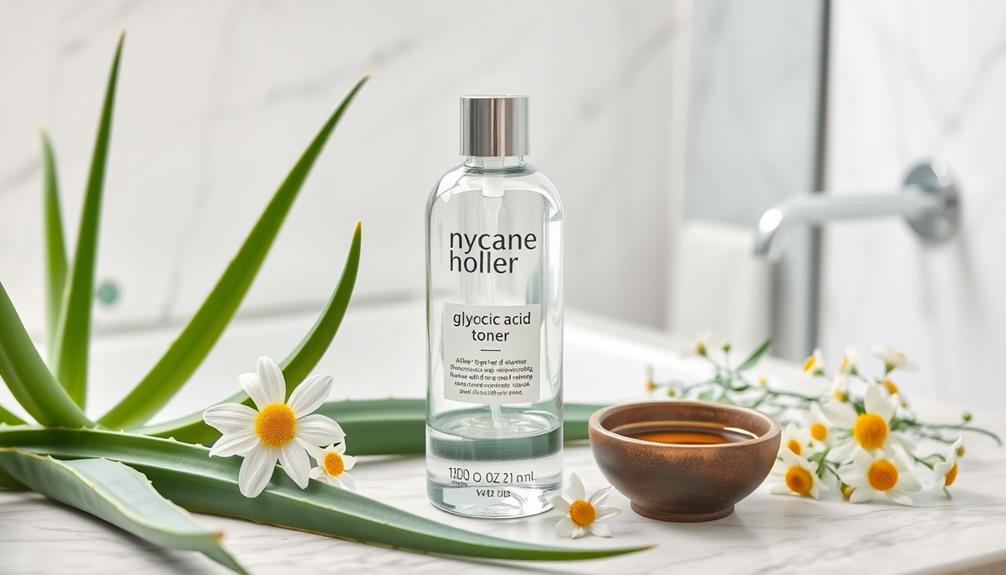
Combining glycolic acid with the right ingredients can enhance its benefits while minimizing potential irritation.
One effective pairing is glycolic acid toner with hyaluronic acid. This combination not only exfoliates but also boosts hydration, keeping your skin moisture levels balanced. Regular application of glycolic acid can lead to improved skin texture, similar to the way consistent care influences cat health and nutrition.
If you're looking for anti-inflammatory benefits, layering niacinamide with glycolic acid can improve your skin barrier function, though you should be cautious about potential irritation from low pH interactions.
For brightening effects, consider mixing glycolic acid with licorice root extract. This duo works wonders in reducing hyperpigmentation and evening out your skin tone. Additionally, incorporating green tea extract into your regimen can provide antioxidant protection, helping your skin resist environmental stressors while enhancing overall health.
However, it's essential to avoid combining glycolic acid with ascorbic acid (vitamin C) in the same application, as this can lead to irritation and reduce the effectiveness of both ingredients.
Frequently Asked Questions
What Percentage of Glycolic Acid Do Dermatologists Use?
Dermatologists typically use glycolic acid concentrations between 30% to 70% for professional treatments, while for at-home use, they recommend products with 5% to 10% to guarantee effective exfoliation without causing irritation.
What Happens if You Use Glycolic Acid Toner Everyday?
If you use glycolic acid toner every day, your skin might resemble a delicate flower wilting under the sun. You'll risk irritation, redness, and sensitivity, so start slow and listen to your skin's needs.
Does Glycolic Acid Toner Really Work?
Yes, glycolic acid toner really works. It exfoliates your skin, improves texture, reduces fine lines, and enhances radiance. Just remember to start slow, especially if you have sensitive skin, to avoid irritation.
What Are the Bad Side Effects of Glycolic Acid?
Oh sure, slather on glycolic acid like it's magic! Just be ready for redness, peeling, and increased sun sensitivity. You might even enjoy hyperpigmentation if you overdo it. Moderation's key, or your skin might revolt!
Conclusion
Incorporating glycolic acid toner into your skincare routine can transform your complexion, but it's crucial to use it wisely.
Some people wonder if using it daily is necessary for maximum results. While consistency is key, overuse can lead to irritation.
Dermatologists suggest starting with a few times a week and adjusting based on your skin's response.
Remember, everyone's skin is unique, so listen to yours!
With patience and proper use, you can achieve that radiant glow you've been dreaming of.




